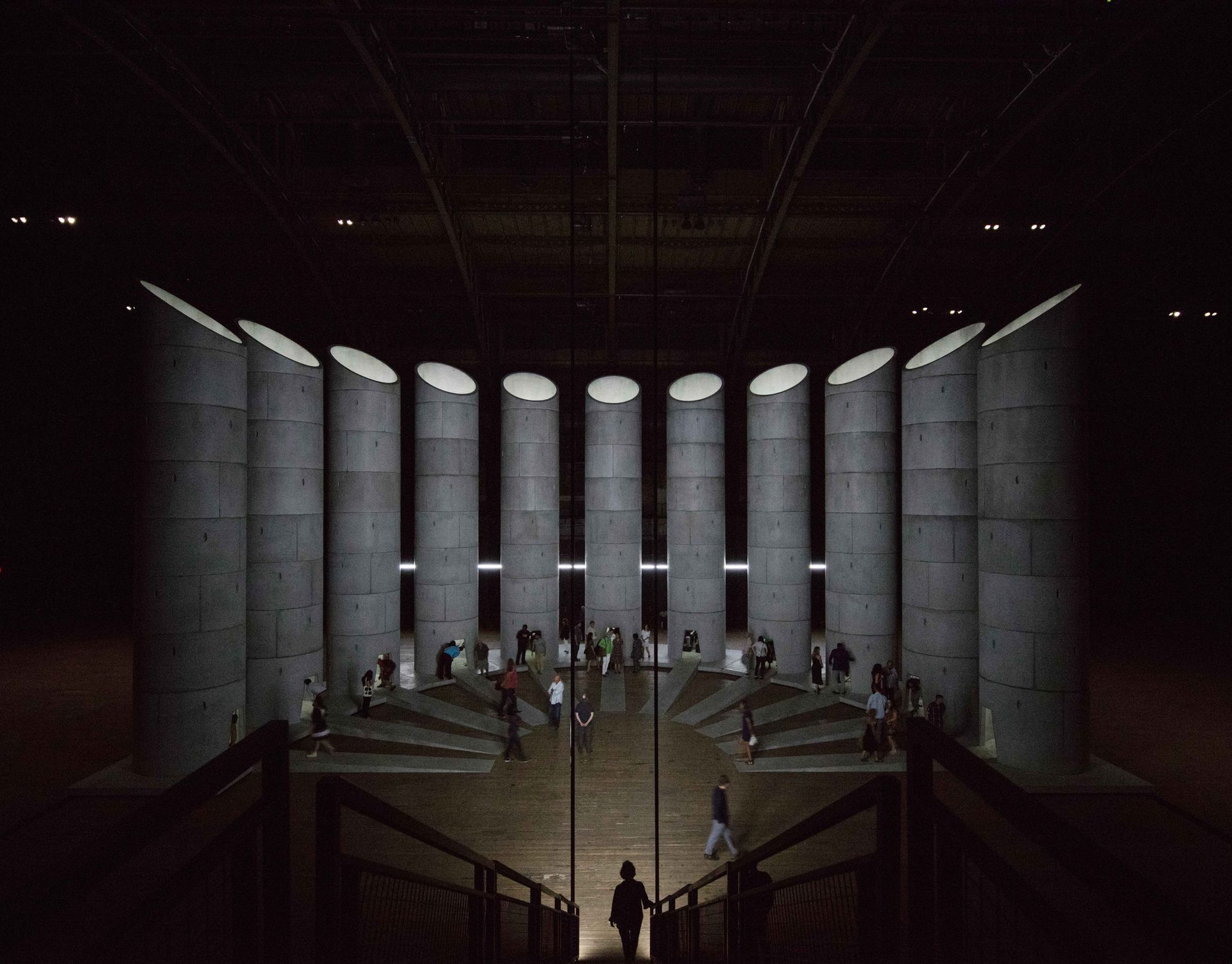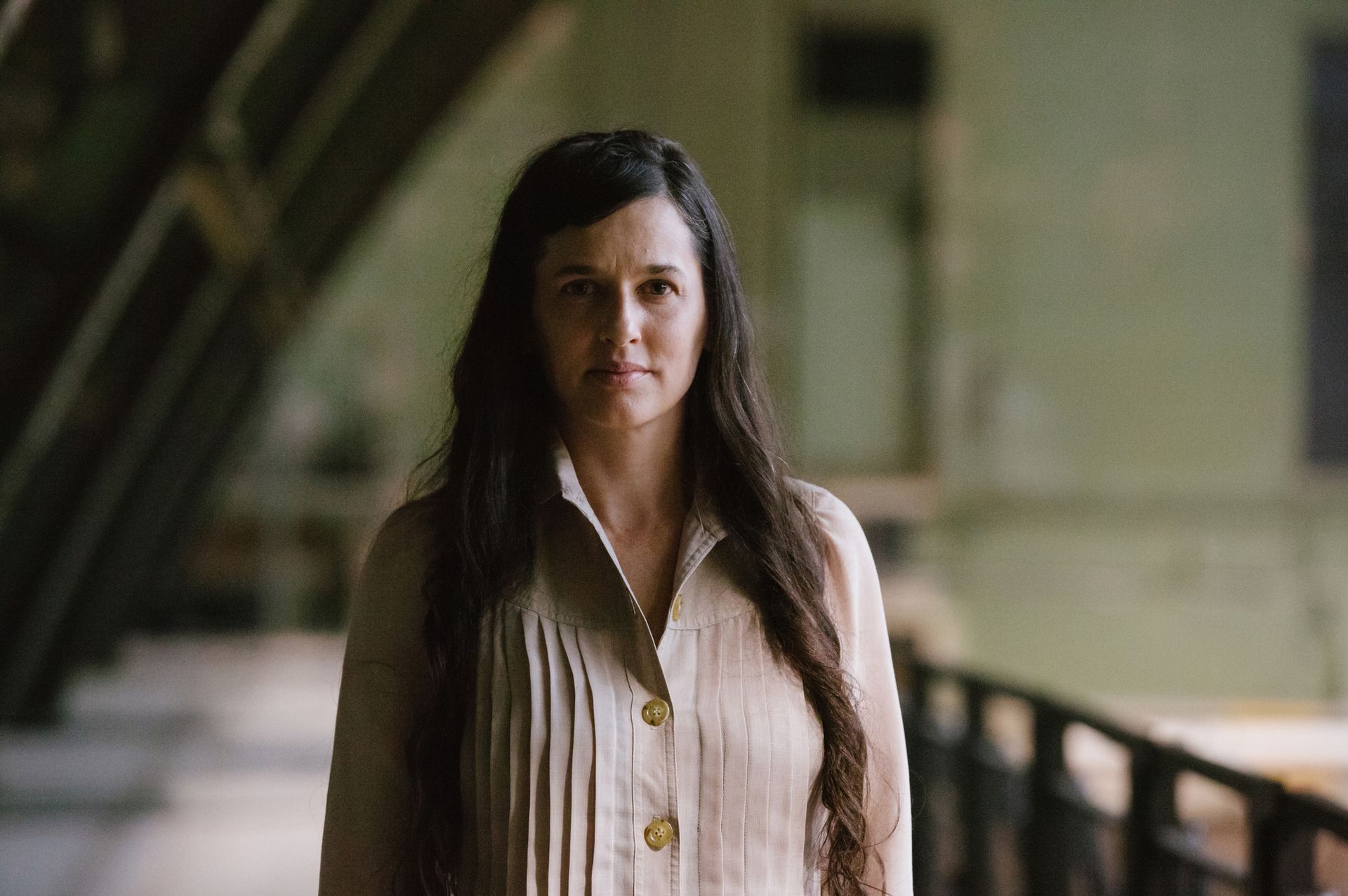An Occupation of Loss, the latest major work by the New York-born multidisciplinary artist Taryn Simon, deals with the “physical and structural markings of loss that mankind has practised since Neanderthal times”, the artist told The Art Newspaper. The work involves more than 30 professional mourners, a historic profession where a person enacts rituals based on grieving and spiritual practices. The mourners perform the grieving customs of 11 separate cultures within 48-ft tall concrete pipes that were conceived as “inverted wells”, inspired by the Towers of Silence in Zoroastrian religion, and designed in collaboration with the architecture firm OMA/Shohei Shigematsu. The project is currently on view in the Park Avenue Armory’s Drill Hall until 25 September.
During the sold out evening performances, visitors watch the mourners walk into the concrete monoliths, which each contain a small room with no door at their bases, and are then invited to enter the structure of their choosing to watch the mourners’ recitations. In the daytime, visitors can create their own sounds within the structures and the sound of their movements will fill the drill hall, joining with the subtle noises of previous performances.

Some of the performances include Kyrgyzstani women wearing head scarves and singing koshok, a hymn used for funerals and memorials; female oppari singers from Tamil Nadu in India, who practise an ancient tradition where verses are sung for 16 days after a person’s death to guide the soul on its path to heaven; and a ceremony performed by the Venezuelan Guajiros, who sing with a black handkerchief covering their faces in two ceremonies, first to begin the deceased’s journey to a scared place and then eight years later to send the soul to the Milky Way.
“For this work, I was looking at the space that grief generates and the performance of it—the simultaneity of authenticity and script and the lines between personal, communal, individual, national and global mourning”, says Simon, “For the past three years I’ve been contemplating how mourning is conducted, how we give structure to unspeakable loss, and how grief operates without a visible body at the centre when the object of mourning is abstracted.”
Simon additionally compiled a 70-page catalogue comprising the supporting documents that were submitted to the US Citizenship & Immigration Services for the mourners’ visa petitions as “artists or entertainers coming to be part of a culturally unique programme”. Many of the applications were denied. “Unbeknownst to them, the US government, in many ways, became a collaborator and an active part of the curatorial process, shaping the final work”, Simon says.

The catalogue includes testimonials gathered from ethnomusicologists, philosophers, museums directors, writers, scholars and cultural anthropologists such as Dr Rieki Crins who, in a letter of support for three Bhutanese monks, one of whom was rejected, detailed the days-long funerary rituals that the monks perform to guide the deceased in the state of bardo into reincarnation, including drumming and reciting sutras.
The Park Avenue Armory will host an artist talk with Simon and the scholar Homi K. Bhabha on 24 September, and the arts organisation Artangel, who co-commissioned the project with the Armory, will present the work in London next year.

